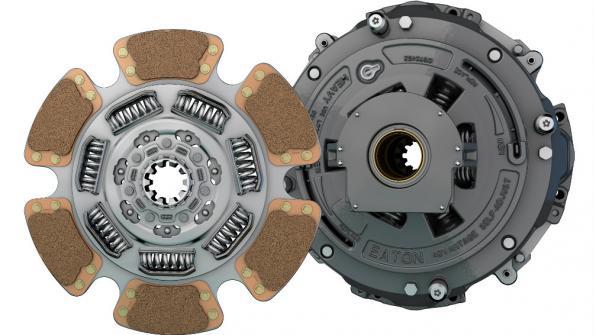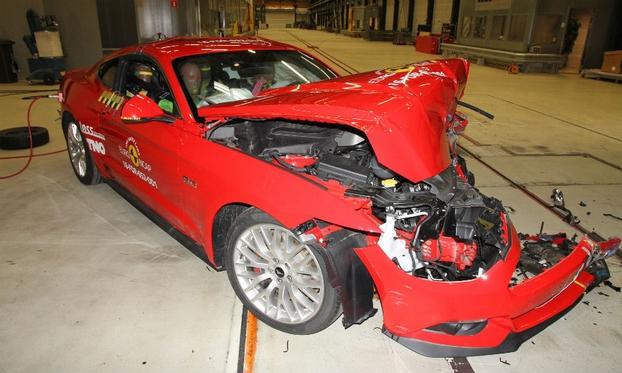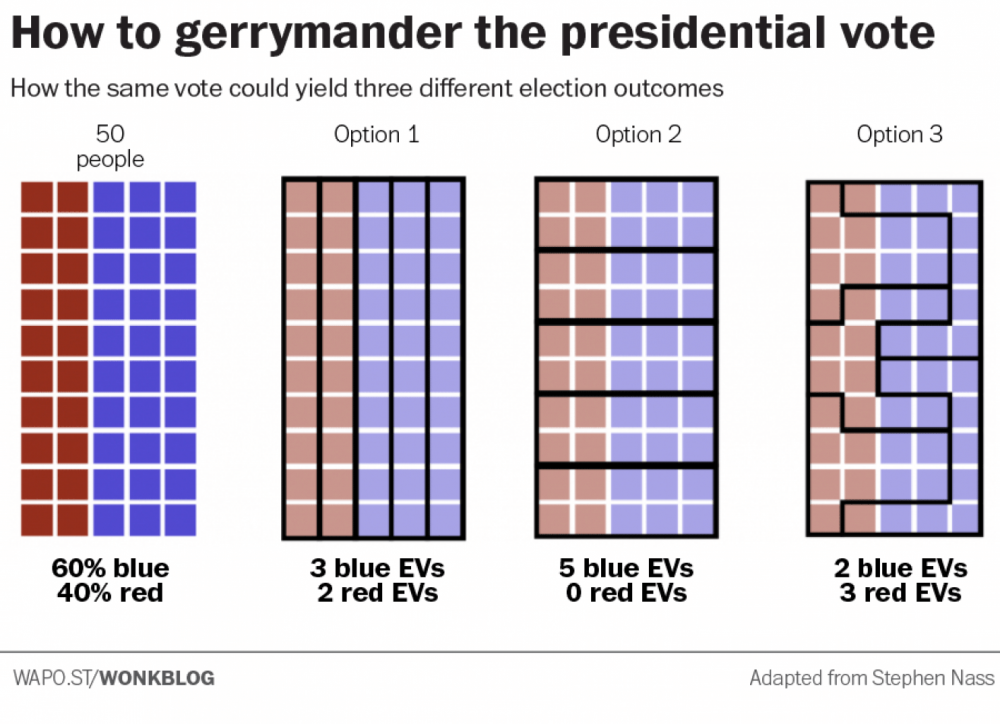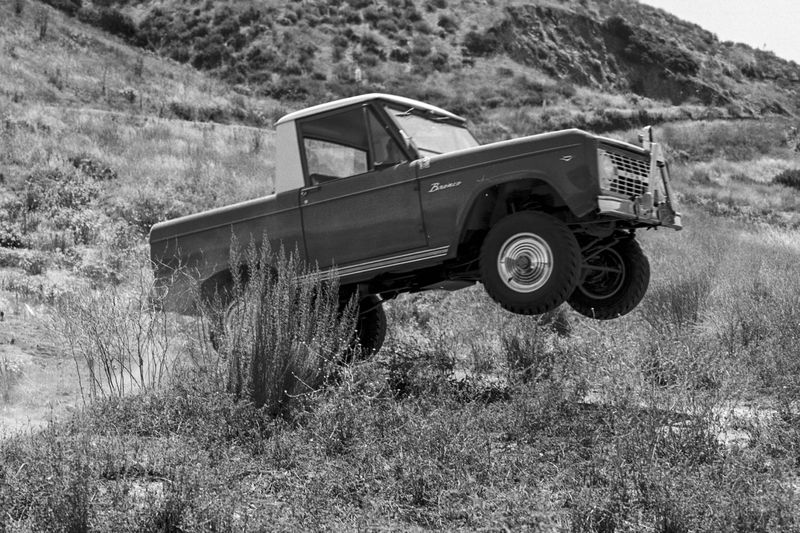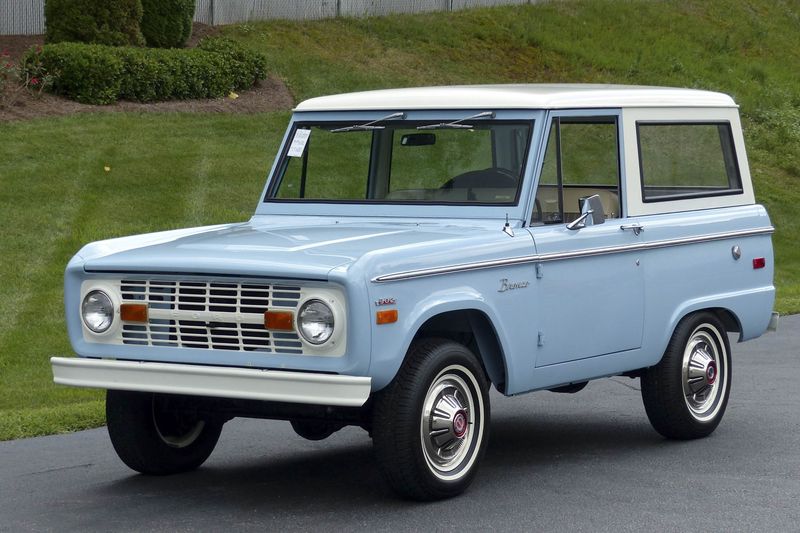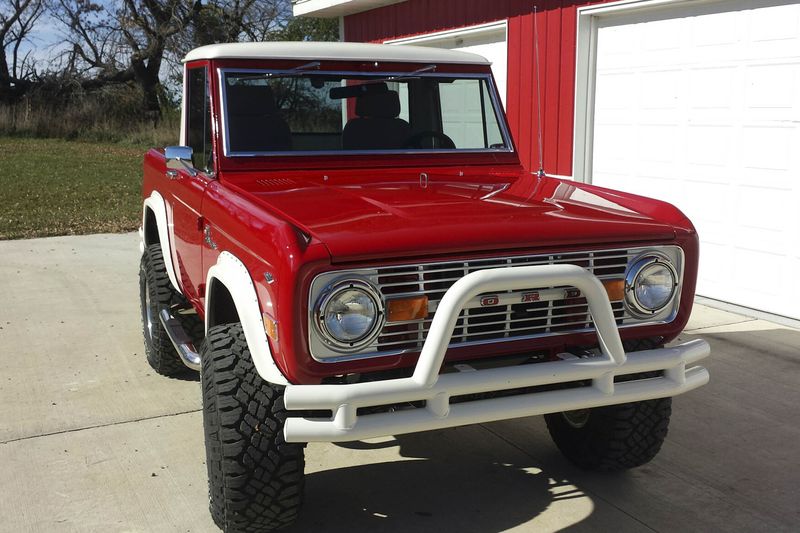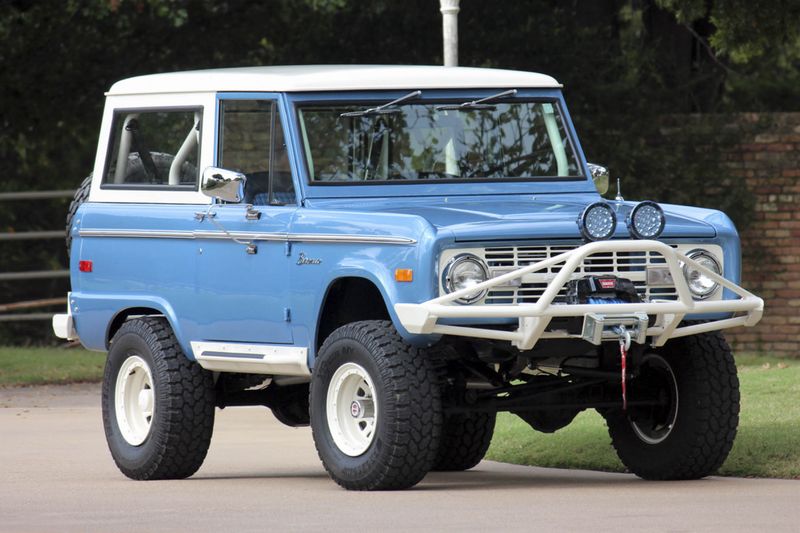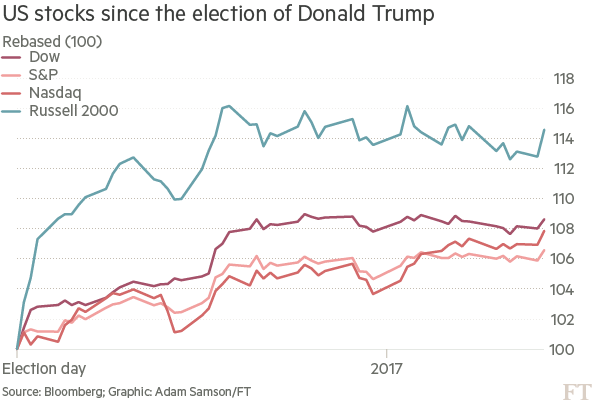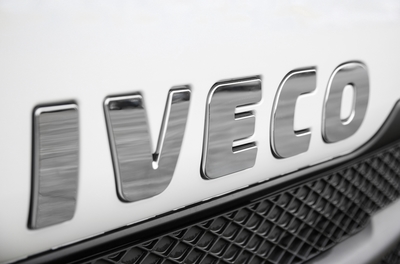
kscarbel2
Moderator-
Posts
18,930 -
Joined
-
Days Won
114
Content Type
Profiles
Forums
Gallery
Events
Blogs
BMT Wiki
Collections
Store
Everything posted by kscarbel2
-
As of today, it has been confirmed that no less than five Trump family members and top administration appointees are/were registered in two states during last fall's election. Steven Mnuchin is registered to vote in both New York and California. Steve Bannon was registered to vote in both Florida and New York (Florida removed Bannon from its rolls just this Wednesday). The President Trump's son-in-law and White House adviser, Jared Kushner, is registered to vote in both New Jersey and New York. Tiffany Trump, the president’s youngest daughter, is registered to vote in both Pennsylvania and New York. Sean Spicer, White House press secretary, is registered to vote in both Rhode Island and Virginia. Gregg Phillips, who Trump has promoted as an expert on voter fraud, is registered to vote in Alabama, Mississippi and Texas. “You have people that are registered who are dead, who are illegals, who are in two states,” President Trump told ABC's David Muir Wednesday. “You have people registered in two states. They're registered in a New York and a New Jersey [like Jared Kushner]. They vote twice. There are millions of votes, in my opinion.” [including Trump’s own people] It is not illegal to be registered to vote in two states, and of course it doesn’t automatically mean that these voters are casting ballots in two locations. BUT, Trump’s clear position is "they vote twice" (his comment above). Here in year 2017, in the electronic age, why isn’t there a national registration system that, should you attempt to register in a state, it would immediately note that you are already registered in another state, and give you the choice to switch your registry, should you choose, but effectively preventing you from registering in two or more states ? And again, in year 2017, why isn’t there a national (federal) electronic “direct vote” system that, after presenting your voting ID (driver’s license), allows every American to cast one vote, and one vote only, in any state they happen to be in at that moment ?
-
You guys certainly enjoy a colorful discussion. I enjoy hearing everyone's thoughts, as you all bring valid points to the table. We're all different. As has been said, if we were all exactly the same, the world would be a pretty dull place. In my mind, the last great president with significant accomplishments was Dwight D. Eisenhower. What can I say......I have high expectations in a president. I myself don't think Obama was any worse that George W. Bush, who, I feel, created a real mess in foreign affairs (e.g. Al Qaeda, ISIS, ect.).
-
Trump’s order for "major investigation" into voter fraud is based on misquoted university’s research The Associated Press / January 25, 2017 If Jesse Richman could get one message to President Donald Trump, it would probably be this: Stop misquoting our research. Richman, an associate professor at Old Dominion University (ODU) in Virginia, found his work tangled up in Trump’s latest effort to support his unsubstantiated claim that millions of illegal ballots were cast in November – the reason Hillary Clinton won the popular vote by nearly 3 million. Trump announced Wednesday that he’s ordering a “major investigation“ into voter fraud – a claim he first made on the campaign trail, then repeated this week at a meeting with Republican leaders. Richman heard his research – or some twist on it – being cited by White House press secretary Sean Spicer as he defended Trump’s “long-standing belief“ to a room full of reporters Tuesday: “I think there have been studies; there was one that came out of Pew in 2008 that showed 14 percent of people who have voted were not citizens.” Spicer got it all wrong, according to Richman. “First of all, he’s confusing our study with another study,” Richman said, “and then he’s flipping ours around and exaggerating the most extreme estimates from it.” The Pew Charitable Trusts did release a study in 2012 that indicated 1.8 million deceased voters remain on the roles and millions of other voter records are out of date. But the study did not say anything about voter fraud. The 14 percent cited by Spicer appears to have come from research Richman and ODU co-authors published in 2014, an analysis titled “Do non-citizens vote in U.S elections?“ Using data from the Cooperative Congressional Election Study, which interviews tens of thousands of people every election year, the ODU study concluded that, at most, “maybe 14 percent of non-citizens engaged in some type of voting behavior,” Richman said. Repeat: That’s not 14 percent of all voters. That’s 14 percent of all non-citizens. “And keep in mind that non-citizens are a fraction of the total U.S. population,” Richman said, around 20 million adults. “So they maybe make up, at the very, very high end, 1 percent of an electorate.” Even if every one of them voted for Clinton, would that have been enough to cost Trump the popular vote? “The answer is no,” Richman said. The White House has yet to provide details about the investigation. In back-to-back tweets, the president revealed that it would cover “those registered to vote in two states, those who are illegal” and “those registered to vote who are dead (and many for a long time).” Trump used all capitals – VOTER FRAUD – for emphasis. “Depending on results,” he tweeted, “we will strengthen up voting procedures!” Ironically, Trump’s treasury department nominee and chief strategist and senior counselor was among those who fit the first category. Steven Mnuchin is registered to vote in both New York and California, and during the campaign it was discovered that Steve Bannon was registered to vote in both Florida and New York. Florida removed Bannon from its rolls just this Wednesday. Trump has been fixated on his loss of the popular vote and a concern that the legitimacy of his presidency is being challenged by Democrats and the media, aides and associates say. Secretaries of state across the country have dismissed Trump’s claims of voter fraud as baseless. All 50 states and the District of Columbia have finalized their election results with no reports of the kind of widespread fraud that Trump is alleging. Trump’s own attorneys dismissed claims of voter fraud in a legal filing responding to Green Party candidate Jill Stein’s demand for a recount in Michigan late last year. “On what basis does Stein seek to disenfranchise Michigan citizens? None really, save for speculation,” the attorneys wrote. “All available evidence suggests that the 2016 general election was not tainted by fraud or mistake.” As for Richman: “We wish Donald Trump would stop citing our work.”
-
Renault Trucks Press Release / January 25, 2017 Renault Trucks, the leading European truck manufacturer in Algeria with almost a 40% share of the 16-ton market for European vehicles, has just commenced construction of the SOPROVI assembly plant in Meftah. In order to comply with new Algerian regulations, C and K range vehicles for this market will now be assembled locally. Renault Trucks and Algeria enjoy strong, long-standing ties. In 1958, Berliet started building its GLR Trucks in Rouiba and since then, Berliet Trucks, followed by Renault Trucks, have never left Algeria. The manufacturer now plays a leading role with a 40% share of the 16-ton market. Renault Trucks Algeria and its network employ nearly 600 people. In order to comply with new Algerian regulations, vehicles manufactured for this market will now be assembled locally. Renault Trucks and the BSF Soukari group therefore signed a shareholder joint-venture agreement in August 2016 and construction of the new plant began in January 2017. Extending over an area of 24,000 m², the SOPROVI plant is being built in Meftah, in the province of Blida, in two stages, with 1000 vehicles set to be assembled in 2018 and 2000 in 2019, and with production capacity that can be adjusted to meet market requirements. The plant is set to create nearly 500 jobs, including 200 direct jobs and will be mainly dedicated to assembling Renault Trucks C and K ranges. This new Algerian production site confirms the commitment of Renault Trucks to the Algerian market and is set to play a long-term role in the economic and social development of the country.
-
Heavy Duty Trucking / January 25, 2017 The commercial vehicle market in 2016 was a tug of war between gaining medium-duty and declining heavy-duty sales, according to analysts. In 2017, however, medium-duty sales may be high enough to stabilize the commercial vehicle market. Class 3-7 medium-duty registrations in 2016 increased compared to the previous year, contrasting with the Class 8 market which declined throughout the year. This led to a decline overall in the commercial vehicle market last year. Market analyst expect the commercial vehicle market to stabilize in 2017, due primarily to gains in the medium-duty segment. With the medium-duty market set to grow again in 2017, gains in the Class 4-7 range could increase enough to offset expected softness in the heavy-duty end. Combined Class 4-8 commercial truck sales are projected to settle in the range of 400,000 units for the year, virtually flat from 2016. “The market for commercial vehicles in GVWs 3-8 has performed in line with our expectations during the 2016 calendar year,” said one analyst. “The decline in GVW 8 new registrations by large (501+) fleets was first identified during the middle of the 2015 calendar year and the subsequent decline continued throughout the 2016 calendar year.” A large factor in the sales decline was that new commercial vehicle registrations were down among large fleets operating more than 501 vehicles. These large fleets registered 8.7% fewer new vehicles over an 11-month period in 2016 compared to the year before. “These large fleets accounted for less than 40% of new GVW 8 registrations prior to the 2008 calendar year and reached a peak of over 50% during the 2011 calendar year,” he said. “The recovery in GVW 8 new registrations will need renewed activity by these large fleets if the annual volume is to remain in the 225,000-250,000 unit range annually.” Ford was the top-selling brand in the commercial vehicle market last year, with new registrations up 10% year-over-year as a result of strong performances in the Class 3-5 segments. In the Class 8 market, Freightliner remained the segment leader with a 34.4% share, followed by Kenworth with a 14.9% share and Peterbilt with a 13.9% share. Regionally, sales were better in the West and Northeast U.S. last year, contrasting with declining sales in the South and Central regions of the country.
-
Sean Kilcarr, Fleet Owner / January 25, 2017 A wide range of start-up companies could reshape the trucking world and how freight gets moved. A new study by global consulting firm Frost & Sullivan indicates that a growing variety of start-up ventures are fomenting broad change in the global trucking industry – altering everything from how trucks operate, including driving themselves, to how freight shipments are booked, paid for, and moved. “The fact is that trucking offers a huge potential for being disrupted,” Sandeep Kar, global vice president for research and mobility at Frost & Sullivan, told Fleet Owner. In the firm's report, entitled, Start-ups Disrupting Global Connected Truck Market 2016-2017 Kar said there is a "huge upside for improvement [in trucking] for it is not the most optimized industry – there are so many moving parts moving at sub-optimal speeds." He added that consumers and shippers today are being “born into reality called Amazon” where the low-cost yet extremely speedy delivery of all manner of goods is now an everyday expectation. “That’s why these start-ups are moving the needle and driving the innovation,” he pointed out. “They are here to drive efficiencies, drive opportunities to lower TCO [total cost of operations], enhance safety, and to increase revenue potential for [industry] stakeholders.” What is attracting all of these new start-ups to trucking – firms such as Transfix, Trucker Path, Otto [newly purchased by Uber], MyLumper, Peloton, Loadsmart, and many others – is that while hauling freight by truck is “not a very sexy industry” in Kar’s words, it moves $700 billion worth of a freight per year in the U.S.; a number that gets people’s attention. From that perspective, then, and using the “connected truck” as a launching pad of sorts for a variety of services, Wallace Lau, industry principal with Frost & Sullivan and primary author of this study, expects industry-wide “disruption” of the traditional freight world by start-up companies to be concentrated in five areas: Autonomous or self-driving truck technology; Video-based safety systems; So-called “utility” applications for smart phones, largely driver-focused; Fleet management solutions; Digital freight brokering. Altogether, those markets are expected to offer big revenue opportunities over the next year, rising from $10 billion today to roughly $245 billion by 2025, according to Frost & Sullivan’s projections. Lau notes that $210 billion of that future $245 billion market is going to be based solely on digital freight brokering. At the same time, he said a “new use of telematics” by digital freight brokers could disrupt how that technology is deployed in trucking. “There’s always been a cost barrier with telematics in terms of hardware and monthly fees,” he explained. “Now digital freight brokers can come in not only with lower fees but offer a wide variety of telematics services basically for free, just for using their [freight brokering] service,” Lau said. “These new [digital] brokers get a lower commission as their costs are lower and for that also offer location-based tracking, ETA [estimated time of arrival] notices, hotel rate shopping [for drivers], parking spot location, and [vehicle] prognostics. It is similar to Netflix vs. Blockbuster; all of sudden center of gravity shifts. And that could be a game changer for fleets.” It could be a “game changer” for truck manufacturers, too, he stressed, as technology-focused start-ups could help OEMs reduce research & development spending by 20% to 30% and cut anywhere from three to five years off the time-to-market pipeline. That’s critical because Lau said “connected trucks” could be the norm in the future. Right now, according to Frost & Sullivan survey data, nearly 40% of fleet managers feel connected trucks are a “must have” item. As a result, the firm expects 35 million trucks worldwide will be “connected vehicles” by 2020. “With smart roads and smart cities, the smart truck will be a necessity,” he emphasized, as connected trucks will allow users to more easily pay for fuel, toll, parking, infotainment, and many more services in real-time with fewer hassles. For OEMs, they offer opportunities “beyond point-of-sale,” Lau added, notably in terms of warranty management. “The entire organization within the fleet – dispatch, drivers, maintenance, and operations – all are being connected with new apps and software to shipments,” he told Fleet Owner. “This is all being moved into digital freight market. Right now, a lot of time is being wasted with current [freight shipment] process,” Lau said. “Having everything automated with connectivity will help overall by making trucking more efficient. It’s about the optimization of assets; every dollar saved is key.”
-
Eaton updates Advantage Series clutches Truck News / January 25, 2017 Eaton has updated its line of Advantage Series heavy-duty clutches, to increase durability, reduce vibrations and improve shifting. The new clutches were shown for the first time during Heavy Duty Aftermarket Week, with production set to begin in the second quarter for OEMs and the third quarter for the aftermarket. “The improvements we have made support the changing requirements of contemporary diesel engines and powertrains, including downspeeding designs,” said Ben Karrer, global product strategy manager, Eaton. “In addition, this newest line of clutches is the smoothest and most durable ever developed by Eaton.” Improvements include: a new strap drive system, which affixes the intermediate plate to the housing and prolongs clutch life by eliminating lug fatigue; soft rate dampers that better absorb engine vibrations to prevent driveline damage; a spring separator that permits cleaner, quicker disengagement with the engine; and a second wear tab indicator. The new clutches will replace the existing Advantage Series clutches and parts numbers will be reduced from 41 to 28. The biggest change, Karrer explained in an interview, is the strap drive system. “The reason why we’re making this change is because more and more, we see vehicles produced with boosted hydraulic linkages,” he explained. “Those decrease the amount of pedal effort to disengage the clutch. Combined with drivers who have less experience, we’re seeing more clutch open time. The lug is not designed for a lot of clutch open time so it’s a system that needed to be updated. This system is much stronger and eliminates that as a failure mode.” An added benefit is that it also eliminates rattle when the clutch is open. Karrer said Eaton has increased its focus on noise reduction, as quieter cabs and engines are now causing even small noises and rattles to become audible in the cab. “It’s not a common complaint, but it’s something you hear,” he said. “These sorts of rattles that have been there for ages are starting to be heard through all the other noises that are decreasing in amplitude.” Karrer said customers in applications with frequent clutch actuations will see a noticeable increase in service life. Pricing is set by OEMs but will be close to current product, Karrer added.
-
Fleet Owner / January 25, 2017 The newest generation of the Advantage Series heavy-duty clutches from Eaton have received a number of design upgrades intended to improve performance in low-RPM downspeeding applications as well as provide better shift performance, reduce vibration and chatter, and make it easier to monitor clutch wear. Introduced during Heavy-duty Aftermarket Week, both the Eaton Advantage Self-adjust and Easy-pedal Advantage have been fitted with soft-rate spring dampers to prevent driveline damage in powertrains speced to deliver improved fuel economy through downspeeding. By better isolating driveshafts in low RPM/high-torque conditions from engine combustion pulses, the softer damper springs can improve driveline durability while handling torque ratings up to 1,850 lbs. ft., according to Ben Karrer, global product strategy manager at Eaton. A second wear tab indicator added to the self-adjust model will make it easier for shop personnel to visually inspect the clutch for wear, he pointed out. Other changes for both Easy-pedal and Self-adjust Advantage clutches include a new strap drive system said to eliminate lug fatigue wear and rattle when the clutch is disengaged. A new spring separator system is designed to deliver quicker disengagement for smoother shifts. Torque ratings for the newest Advantage heavy-duty models range from 1,650 to 2,250 lbs. ft. The Self-adjust Advantage is covered by a 3-year/350,000-mi. warranty and the Easy Shift by a 2-year/unlimited-mi. warranty. .
-
Unsafe at any speed – Mustang fails European crash testing
kscarbel2 posted a topic in Odds and Ends
Automotive News Europe / January 25, 2017 Ford Motor was criticized by the European Union’s Euro NCAP safety organization after its Mustang scored just two stars out of a maximum of five in crash tests. "Ford did not expect Euro NCAP to test the Mustang and chose not to fit safety technology which is available to its American consumers," Euro NCAP Secretary General Michiel van Ratingen said in a statement. Mustangs sold in Europe are not equipped with automatic emergency braking (AEB) technology [but that’s no excuse for the poor crash results. Without the AEB “option” Mustang should still provide a high level of acceptable safety in year 2017]. Ford said it will fit the technology on an updated version of the car available to European customers who order after September. The company said its decision to leave out the automatic emergency braking technology when it launched the Mustang in Europe in 2015 was due to low demand from target customers. The Mustang is a "safe car, meeting or exceeding all applicable safety standards globally," Ford said in a statement. The automaker said the Mustang scored a five-star rating in crash tests carried out by NHTSA (National Highway Traffic Safety Administration) in the U.S. Euro NCAP also penalized the Mustang for insufficient inflation of the driver and front passenger airbags that caused the crash test dummies' heads to make head contact with the steering wheel and dashboard. Protection for children seated in the back of the car was also criticized. The car scored 32 percent for child occupant protection. Euro NCAP changed the way it scored crash test results to include automatic emergency braking last year, citing research in UK and Germany showing that the technology could prevent one in five fatal pedestrian collisions. Ford said if the Mustang been tested before this new protocol was established, the car would have scored much higher. Euro NCAP scored the Mustang four stars out of five for adult occupant protection. Euro NCAP rarely tests sports cars because of their low volume, preferring to focus on more popular cars. The organization is backed by the European Union and its safety results are closely watched by automakers because they can influence buying decisions. . -
So Trump asked the CEOs of General Motors, Ford and Fiat Chrysler Automobiles (FCA) to come to the White House on Tuesday for a meeting aimed at getting them to produce U.S. market light vehicles...........in the U.S. Otherwise, he’s threatening a 35% tariff on goods sold in the U.S. but made in foreign countries. Why weren’t representatives of Honda, Toyota, Nissan, Subaru, Hyundai and Kia, Volkswagen, Mercedes-Benz and BMW also invited to the party? The situation involves them just as much as GM, Ford and FCA. After all, Toyota and Honda are ranked no. 2 and no. 4 respectively in U.S. market sales. One could ask, why was FCA in attendance and not the other foreign automakers? FCA is owned by Italian automaker Fiat, and incorporated in the Netherlands. And where were the representatives of the major parts suppliers who have outsourced more than 50% of their manufacturing in the last 20 years to foreign countries with cheaper labor? Lastly but not least (drum roll here), where were the representatives of Daimler, Navistar and Paccar, and truck parts suppliers, who have relocated so much of their production to Mexico ???
-
Trump picks inconvenient time to push for new U.S. auto factories Bloomberg / January 25, 2017 President Donald Trump is asking the Detroit 3 automakers to invest in domestic manufacturing at a bad time. Car sales have gained for seven-straight years after the U.S. auto bailouts and the financial crisis, a streak that’s close to running out of gas. That’s a recipe for trouble facing companies wary of undoing the painful but necessary steps they took to shut dozens of factories across the country, before and during a more than $70 billion government bailout. New assembly plants cost General Motors, Ford Motor Co. or Fiat Chrysler Automobiles about $1 billion -- the sort of investment companies look to avoid making as a market peaks. And while factories boost jobs, economic gains from building them are being undercut by automation and pressure to compete with lower-wage countries including Mexico. “This is the nightmare scenario for auto companies, which are being asked to make huge capital investments right before a slowdown in sales,” said Dan Luria, an analyst who has advised the UAW. “It seems like hardly the time to spend billions on new plants.” Trump dangled government concessions in a meeting Tuesday with the three automakers’ chief executives. Without providing details, the president promised in front of reporters to ease up on taxes and environmental regulations to entice them to build their first U.S. vehicle assembly plant in more than a decade. Tone-setting tweet Trump wrote in a tweet before the meeting: “I want new plants to be built here for cars sold here!” His desires may fall on deaf ears, according to Steven Rattner, who led former President Barack Obama’s auto task force. “I don’t think there is any possibility -- having survived a near-death experience -- that the car companies will build plants that they don’t need, simply to indulge the president,” Rattner said in a phone interview. “This all comes at a strange time.” Along with car-parts companies they used to own, the automakers shuttered more than 100 manufacturing sites in the U.S. from 2004 to 2010, according to the Center for Automotive Research. Many of those closings occurred as part of the Obama administration-led restructurings of GM and Fiat Chrysler. Mary Barra, GM’s CEO, called the meeting with Trump “constructive.” Ford’s Mark Fields praised the president’s withdrawal from the Trans-Pacific Partnership trade agreement, which he said failed to address currency manipulation, “the mother of all trade barriers.” FCA CEO Sergio Marchionne said he looked forward to working with the administration and Congress to strengthen U.S. manufacturing. Lacking specifics All three need more specifics before being able to determine whether building domestic factories will be worthwhile. The industry already struggles to make money on slow-selling passenger cars. It may have even more trouble if the president follows through on threats to tax imports from Mexico, where minimum hourly wages are less than one-sixth the average in the U.S. “There are other things we don’t know about that are being talked about, in terms of tax reform and regulations,” said Michelle Krebs, a senior analyst for Autotrader. “Does that offset that? I don’t know.” None of the CEOs who met with Trump on Tuesday promised to build a vehicle assembly in the U.S. Neither company has opened one since GM started production in 2006 at a Michigan factory now making Chevrolet Traverse, GMC Acadia and Buick Enclave SUVs. “We’re going to make the process much more simple for the auto companies and everybody else that wants to do business in the U.S.,” Trump told reporters before sitting down with the CEOs. “I think we’ll go down as one of the most friendly countries, and right now, it’s not.” Peaking sales After the U.S. auto market’s 68 percent surge since 2009, sales will be roughly flat through 2020, researcher LMC Automotive said in a report last week. After setting a record with nearly 17.6 million vehicles last year, the industry will keep coming up short of that level through the end of the decade, LMC said. The recession-era retrenchment has contributed to automakers now running plants profitably, said Jeff Schuster, LMC Automotive’s senior vice president of forecasting. But that may change as vehicle sales taper off and the industry plans expansions. By 2020, auto plants will run at about 85 percent of their capacity, getting closer to the cutoff line where some factories start to lose money, Schuster said. They’re at around 90 percent now. Consumers also may pay a price, even on U.S.-built cars, if imported parts are taxed. Each Toyota Camry, the nation’s best-selling car the last 15 years, probably would cost about $1,000 more, according to Jim Lentz, CEO of Toyota North America. “If prices start going up, consumers are going to start slowing down their purchases of the car,” Lentz said. “They won’t be able to afford it. That’s going to have us adjust our production schedules, and it’s going to have a negative impact on employment.” Toyota expansion Toyota announced its latest U.S. expansion on Tuesday, investing $600 million and adding 400 jobs in Vice President Mike Pence’s home state of Indiana. This will boost output of Highlander SUVs, rather than passenger cars that are built almost exclusively in the south, where auto workers aren’t unionized. Trump earlier this month attacked Toyota’s plan to supplement Corolla output in Mississippi with a new plant in Mexico. But as the industry automates, factories don’t create jobs like they used to, said Marina Whitman, a professor of business administration and public policy at the University of Michigan. “The American auto industry last year produced more cars than it ever had before, but they did it with somewhere between one-third and one-half the number of workers that they had decades ago,” said Whitman, who was an adviser to President Richard Nixon and GM’s chief economist from 1978 to 1992. She added: “The last thing the auto industry needs is more capacity.” [Agreed. So close your foreign plants that produce medium and high volume vehicles principally for the U.S. market, and relocate that production to the U.S., rather than “adding” production capacity.]
-
After Clinton wins Virginia, state Republicans try to change how votes are tallied The Washington Post / January 25, 2017 A bill advancing in the Virginia House of Representatives would end the familiar "winner take all" system of awarding the state's presidential electoral votes and replace it with a system to award electoral votes by congressional district, similar to what's currently done in Maine and Nebraska. The goal is a noble one. Under the winner take all system, the votes of people who opted for a candidate other than the statewide winner are quite literally not counted when the electoral college convenes in December. If votes were allocated by congressional district, the final electoral vote tally could more closely represent the statewide popular vote mix. In 2016, for instance, Hillary Clinton won 49.8 percent of Virginia's popular vote but 100 percent of its 13 electoral votes. Had those votes been allocated by congressional district instead, Clinton would have received only 7 while Trump got 6. This may seem like a more fair outcome, until you recall that in Virginia, as in most states, partisan lawmakers decide how congressional districts are drawn. In many cases, lawmakers will draw them to give their own party an advantage at the expense of others, a process known as gerrymandering. For an example of how this skews democracy, consider the case of Pennsylvania. In 2012, 51 percent of voters in the state voted for a Democratic House candidate. But because of the way the congressional districts were drawn, Democrats only won five out of the state's 18 House seats. The diagram below explains how this could happen at the presidential level. Depending on how district boundaries are drawn, the exact same popular vote could lead to a blowout for one party in terms of electoral votes, a win for the other, or anything in between. Say we've got 50 people, each represented by a square above. In a hypothetical presidential election, 60 percent of them vote for the blue party candidate, while 40 percent vote for the red. This 50-person state needs to be divided up into congressional districts. If the district boundaries (thick black lines) were drawn as in Option 1, the electoral votes would closely match the popular vote: blue would get 60 percent of them, or three, while red would get two. But let's say the blue party is in power and has drawn the districts to favor itself. In Option 2, there are more blue than red votes in each of the five districts. The blue party candidate sweeps all of them, netting all five electoral votes. But what if the red party were in control? They've creatively drawn the districts in Option 3. In that setup, red party voters have a majority in three districts, while blue party voters only have a majority in two. In that case, blue wins two electoral votes while red gets three. Again, we're looking at the exact same vote in the options above, but radically different electoral outcomes depending on which party is in power. Under Virginia Republicans' proposal, the final electoral outcome could be susceptible to lawmakers' tampering. If you believe winner-take-all is a bad, unrepresentative system (which it is), the simplest solution would be to allocate electoral votes by the state's popular vote. If a candidate wins 40 percent of the statewide vote, she gets 40 percent of the electoral vote. Nothing in the Constitution prevents states from allocating electoral votes this way. An alternative option would be for a state to enter the national popular vote contract, under which a number of states have agreed to award all their electoral votes to whichever candidate wins the national popular vote. .
-
'Sanctuary cities' undaunted by Trump move to cut funding Associated Press / January 25, 2017 Politicians in New York, Seattle and other "sanctuary cities" that [illegally] protect immigrants who are in the U.S. illegally declared Wednesday they won't be intimidated by a move by President Donald Trump to cut off millions in federal funding to such communities. Many cities vowed legal action, arguing that the threatened punishment would be unconstitutional. Boston Mayor Marty Walsh promised to let immigrants who feel threatened by the administration's actions take shelter in City Hall if necessary. "This city will not be bullied by this administration," Seattle Mayor Ed Murray said, adding that he instructed city departments to rework their budgets to prepare for the possibility that federal dollars could be lost. "We believe we have the rule of law and the courts on our side." Washington Gov. Jay Inslee called Trump's executive orders on immigration mean-spirited and unnecessary. California Senate President Pro Tem Kevin de Leon, a Los Angeles Democrat, tweeted: "See you in court." In New York, Trump's hometown, city officials said the administration's action could take away over $150 million in law enforcement funding mainly for counterterrorism efforts, protecting international missions and dignitaries and, arguably, safeguarding Trump Tower, city officials said. "Here in New York City and in cities across this nation, this order could in fact undermine public safety [creative excuse]," Democratic Mayor Bill de Blasio said Wednesday evening - a concern echoed by District of Columbia Mayor Muriel Bowser. While there is no formal definition of the term "sanctuary city," it generally refers to jurisdictions that do not cooperate with federal immigration officials. In some cases, these cities tell police not to inquire about the immigration status of those they encounter, or they decline requests from immigration officials to keep defendants in custody while they await deportation. Others say they do cooperate with such "detainer" requests as long as they're backed by court-issued warrants, but won't allow local officers to enforce federal immigration law. Advocates say such noncooperation policies protect people who may not have exhausted their rights to apply for U.S. residency. They also say that crime victims and witnesses are more likely to cooperate with police if they are not afraid of being deported. "We're not going to sacrifice any of our folks [illegal immigrant] here in Providence," said Jorge Elorza, the mayor of Providence, Rhode Island. "My job is to represent every single [legal and illegal?] resident in the city of Providence, and we will continue to do that." Supporters of a crackdown on sanctuary cities point to cases like the fatal shooting of Kate Steinle in 2015 on a San Francisco pier. A man who had been previously deported and had been released by local law enforcement was charged in her death. White House spokesman Sean Spicer said the Trump administration is going to "strip federal grant money from the sanctuary states and cities that harbor illegal immigrants." Trump signed an executive order that appeared more limited than that. It referred to withholding Justice Department and Homeland Security funds from only those jurisdictions that bar local officials from communicating with federal authorities about someone's immigration status. Peter L. Markowitz, a professor at Cardozo Law School in New York, said such an attempt to cut off funding would face strong legal challenges. "The Constitution prohibits the president from defunding jurisdictions that won't do his bidding," Markowitz said. "There's nothing in federal law that requires localities or states to participate in federal immigration enforcement. Second, the Constitution grants Congress - not the president - the power to determine how federal dollars are spent." In California, local law enforcement officials are barred from holding immigrants arrested on lesser crimes for deportation purposes. More than 100 immigration rights advocates crowded on the steps of San Francisco City Hall, holding signs that said "Undocumented & Unafraid" and "Don't let hate Trump our [criminal] values." "When we know that there is a violation of human rights here [???], this is where we excel," San Francisco Supervisor Sandra Lee Fewer said to cheers. "This is where we lead the nation and we say, 'We will not back down and we will stand up for what we believe is right [i.e. illegal immigration].'"
-
Reuters / January 25, 2017 Democratic U.S. Representative Tulsi Gabbard said on Wednesday she met with Syrian President Bashar al-Assad in Syria and discussed the possibility of achieving peace. The Hawaii Democrat said that during her four-day visit, she wanted to get a first-hand view of the suffering of the Syrian people. She said she met with Assad because "we've got to be able to meet with anyone that we need to if there is a possibility that we could achieve peace, and that's exactly what we talked about." Gabbard, an Iraq war veteran, spoke out against the Democratic Obama administration's policy of supporting the moderate opposition against Assad in Syria's six-year-old civil war. Republican President Donald Trump indicated during the 2016 presidential campaign that he could abandon the rebels to focus on fighting Islamic State, which controls territory in parts of Syria. .
-
Bloomberg / January 26, 2017 Last week in Arizona, car fans spent $259.8 million on vintage and collectable vehicles at the famous Scottsdale auctions. It was $9 million more than last year, thanks largely to the success of million-dollar Ferraris and Jaguars, a group that saw double-digit increases in both the sell-through rate and the average sale price vs. 2016. Less expectedly, the market for cars below $100,000 saw record sell-through rates and above-market sale prices, too. This was true especially when it came to mainstream domestic cars such as the first-generation Ford Bronco. “This interest has been surfacing for a while—the younger buyers love vintage SUVs,” said Jonathan Klinger, a spokesman for Hagerty, a Michigan company that insures vintage and collectable cars. Barrett-Jackson alone sold 12 of them in Scottsdale (“Interest in them continues to grow,” said Craig Jackson, chairman and chief executive officer of the eponymous auction house), with 21 offered throughout all auction houses for the week. Their values have risen as well: The current average value of one in perfect condition is $47,025, according to Hagerty, vs. $23,400 five years ago. For one in drivable and generally good condition, but not perfect, the value is $29,188 vs. $14,500 five years ago. To wit: A rare and highly restored 1968 Ford Bronco Custom pickup sold for $82,500 at the Barrett-Jackson in Arizona, and Mecum sold one in Florida last week for $110,000, a world record price for a special edition Bronco. (The world record for any Bronco sold at auction is $500,000, for a 1969 Bronco sold in 2013.) It all seems to indicate a new norm in the collector market today. While baby boomers dream of vintage muscle cars, millennials with money to spare want vintage SUVs. (And Ford is betting they’ll want new ones, too; an updated Bronco is expected to roll off production lines in 2020.) Ford’s Old Faithful The “first-generation” Broncos that Ford made from 1966 to 1977 are by far the most coveted. These were the cool metal squares set high on big, knobby rubber tires, often with no top at all. The pilot seats inside were vinyl, with a simple, minimal dashboard design, a straightforward manual, three-speed transmission on a short wheelbase and choice of rugged, 105-horsepower straight-six or (later) V8 Ford engines that made them notoriously easy to repair. “We think of the Bronco as neither a conventional car nor a truck, but as a vehicle which combines the best of both worlds,” then-Ford Vice President Donald Frey said in a press memo during the launch. “It can serve as a family sedan, a sports roadster, a snow plow, or a farm or civil defense vehicle. It has been designed to go anywhere and do nearly anything.” Indeed, early Broncos came in wagon, truck, and roadster versions. They excelled at navigating uneven terrain and inclement conditions and were relatively cheap (around $2,404) at the time—the perfect competitor to the Jeep CJ-5 and International Harvester Scout. Ford made nearly 24,000 of them that first year. A Shift in the System While other vintage SUVs, such as the Toyota FJ Cruiser and the Land Rover Defender, have fielded high prices and wild popularity among cool-kid collectors in the U.S. since the turn of the last century, it took longer for Broncos to emerge. They just didn’t seem as special. (Maybe it had something to do with the residual image damage after O.J. Simpson’s White-Bronco-led police chase—though that one was not a first-generation specimen.) That attitude is changing. Millennials were the first generation to mature parallel with the SUV phenomenon, which continues to dominate the new-car market. So it’s only natural that as time passes, that proximity and ensuing affinity would translate into increased appetite for vintage SUVs—especially American ones, which are cheaper and more reliable than their European counterparts. The majority pull of the collector market still comes from baby boomers and Generation X, but not for long. “Here in America we are an SUV culture, so for someone entering this hobby for the first time, they’ve spent more of their life in an SUV than someone in their 60s,” Klinger said. “We know that at some point this year online activity of millennials searching for collector car values will surpass that of baby boomers.” A Good Investment Prices on these vintage jewels vary widely depending on their condition, age, the amount of miles on the engine and the amount of restoration they’ve had. Some have been restored so heavily they’re like a whole new animal. Others are crashed, rusted and not drivable. (Many didn’t survive the abusive off-road duties for which they were designed, which only increases the desirability of the ones that did.) Hemmings lists a 1969 version in white, with pristine burgundy interior, for $115,000; Autotrader lists them for $27,900, $21,495, $77,000, and everywhere in between. You can even get a bare-bones one for less than $7,000—though the likes of that require plenty of extra work. (That’s really part of the allure anyway.) One of the biggest draws, besides those rugged good looks, is their simplicity. Broncos are reliable and easy to use, as far as vintage cars go. Where owning an older car is often like being in a dysfunctional relationship, with continual hurts and disappointments perpetrated by both parties (see: those sexy but finicky vintage Defenders), Broncos are “basically a handful of bolts on a body,” Klinger said. It means you can repair, modify, and upgrade them to your heart’s content. “The mechanicals are very common—most that you need are available at your local Napa Auto Parts store—and the interiors are just a heat-laminated vinyl seat form over foam, so they’re simple and rugged,” Klinger said. “You can really get mechanical satisfaction and mastery out of working on it.”
-
NAV reached a high of $30.28 on Wednesday, and closed at $29.91. OSK reached $73.71 on Wednesday, establishing a new 52-week high, and closed at $73.11. PCAR reached a high of $68.69 on Wednesday, and closed at $68.40. ------------------------------------------------------------------------------- Dow Jones Industrial Average closes above 20,000 for first time The Financial Times / January 25, 2017 Trump rally resumes after presidential orders on pipelines and Mexican wall Donald Trump’s early moves on infrastructure and deregulation have reignited investor confidence in the US economy, propelling stocks into record territory and sending the Dow Jones Industrial Average to close above 20,000 for the first time. Mr Trump was quick to note the milestone for the blue-chip average, tweeting “Great!” with the hashtag “#Dow20K”. But bullish sentiment was not isolated to the Dow, an idiosyncratic index which tracks just 30 popular stocks whose performance is driven by companies with the highest share prices. The broader S&P 500 benchmark also hit new highs, helped by rallies in economically-sensitive sectors directly affected by Mr Trump’s first executive actions, including requiring that domestic steel be used for US pipelines and building a wall along the Mexican border. Investors have poured money into shares of banks and other cyclical companies on hopes that a mix of tax cuts and fiscal stimulus from the Trump administration will accelerate economic growth and inflation. ‘’With a swift move towards signing executive orders, coupled with underlying positive economic data, clarity has begun to hit the headlines, and all the US indexes are celebrating,” said Quincy Krosby, market strategist at Prudential Financial. After a strong post-election rally late last year, the Dow spent more than a month stalled just below 20,000 as investors awaited greater clarity on Mr Trump’s policies. When it passed the threshold, “a loud roar” was heard on the NYSE floor, its governor Rich Barry said. Traders pulled out Dow 20,000 caps they have had ready since about a week after the election, he said. At the close of trading in New York, the Dow was up 0.8 per cent at 20,068.5, while the S&P 500 closed up 0.8 per cent at a record high of 2,298.4. The Russell 2000 index of small, domestically orientated companies rose 1 per cent, but remains just shy of its record close set in December. Since the election, the Russell has gained 15.7 per cent. Launched in 1896, the Dow has surged 9.5 per cent since Mr Trump’s November victory. As a price-weighted average, the Dow has been catapulted higher by strong gains in those member companies with the sharpest share-price movements. Goldman Sachs has accounted for 379 points of the Dow’s 1,736-point march higher since election day as its shares have climbed 30.4 per cent. Boeing, the aerospace group, has contributed 172 points and IT company IBM 158 points. The S&P 500, a benchmark created after the Dow and based on market capitalisation, is far more important to professional investors since it captures a broader cross-section of corporate America. It has trailed the Dow’s gains, rising 7.4 per cent since election day. While the Dow’s march to 20,000 has captured attention, the “degree to which markets can manage to retain their collective stability and constructive trends” is of far more importance, said Peter Kenny, senior market strategist at Global Markets Advisory Group. The Trump administration’s plans to boost infrastructure spending, pare regulations and rethink America’s trade posture have lifted expectations for both inflation and economic growth, boosting the shares of miners this year. MSCI’s ACWI Metals & Mining index, a broad barometer tracking global miners, has rallied nearly 15 per cent in 2017, its strongest year-to-date showing in more than a decade, Bloomberg data show. Miners listed on London’s FTSE 100 have registered gains in the region of 20 per cent this month. Freeport-McMoRan, the large US copper miner, has risen by a quarter since the end of the year. “The reflationary trade of last year and earlier this month has now moved to more of a legitimate inflationary trade, and that is why you have seen a bid for gold and other things that are inflation protection-type investments,” said Michael Underhill, a portfolio manager at RidgeWorth Investments. .
-
Billy, Vegemite is made from “leftover brewers' yeast extract, with various vegetable and spice additives.” https://en.wikipedia.org/wiki/Vegemite Spread some on toast and enjoy the unrivaled taste.
-
Titan to be Discontinued
kscarbel2 replied to Mackpro's topic in Modern Mack Truck General Discussion
Volvo is, literally, obsessed with its margins. It's a Swedish thing. It's all about the high expectation Swedish investors behind the company. -
Mary Tyler Moore, groundbreaking television actor, dies aged 80 The Guardian / January 25, 2017 Star won seven Emmy awards for her work on her eponymous sitcom and The Dick Van Dyke Show Mary Tyler Moore, the award-winning actor and star of two of America’s best-loved sitcoms, died on Wednesday at age 80. Moore, who won seven Emmy awards for her work on The Dick Van Dyke Show and The Mary Tyler Moore Show, died in the company of friends and her husband, Dr S Robert Levine, representative Mara Buxbaum said in a statement. “A groundbreaking actress, producer, and passionate advocate for the Juvenile Diabetes Research Foundation, Mary will be remembered as a fearless visionary who turned the world on with her smile,” Buxbaum added. Moore was also nominated for an Academy Award for the 1981 film Ordinary People, in which she played a mother coping with the death of her son. Born on 29 December 1936 in Brooklyn as the eldest of three children, Moore and her family later moved to Los Angeles where she began appearing in commercials at age 17. From 1961 to 1966, she played Laurie Petrie on the popular series The Dick Van Dyke Show. The comedic role as the wife of Van Dyke’s character was Moore’s first major television role and made her a household name. Her most iconic role was on the Mary Tyler Moore Show, which aired from 1970 to 1977, in which she portrayed Mary Richards, an independent young woman working in a Minneapolis newsroom, as the women’s movement in the US was underway. In the groundbreaking TV series, the 30-year-old Richards battled unequal pay and defied social norms of the time period. The series ran seven seasons and won 29 Emmys. Moore created her production company, MTM Enterprises, with her second husband, Grant Tinker. The pair had pitched the Mary Tyler Moore Show, which spawned three spin-off series, including Rhoda, Phyllis and Lou Grant. The company was responsible for shows such as The Bob Newhart Show and St Elsewhere, among others. Moore won her seventh Emmy in 1993, for supporting actress in a miniseries or special, for a Lifetime network movie, Stolen Babies. Throughout her career, Moore also had a number of roles in film, including the serious role in Ordinary People, which won the Academy Award for best picture, and theater. She won a Tony award for her role in the Broadway play Whose Life Is It, Anyway? in 1980. In her personal life, Moore married her first husband in 1955 and then gave birth to her only child, Richard, who later died at the age of 24 after accidentally shooting himself. Her younger sister, Elizabeth, died at 21 of an overdose and her brother, John, died of kidney cancer aged 47. Moore lived with diabetes and served as chairwoman of the Juvenile Diabetes Research Foundation International, and championed causes such as animals rights. She married Levine, a cardiologist, in 1983. She penned two memoirs, After All (1995) and Growing Up Again: Life, Loves, and Oh Yeah, Diabetes (2009), in which she discussed her life, career, struggles with alcoholism, losing her son and living with type 1 diabetes. Actor Lena Dunham issued a statement, saying that Moore’s “humor, style and vulnerability have had a profound influence on me as a television creator and on every woman I know working in television to upend expectations of traditional femininity. Her remarkable presence and ahead of her time ability to expose the condition of single working womanhood with humor and pathos will never be forgotten. Her generosity as an animal rights activist and icon will never be forgotten. I never met her and I’ll love her forever. I know I’m one of millions.” Rose Marie, who appeared alongside Moore in the Dick Van Dyke Show, also paid tribute to her today. “She was wonderful. She came to us as a complete novice, but she learned so quickly and she became one of the best,” she said. Rose Marie went on to add: “The last time I saw her, I think, was when we did that reunion [several years ago], but I kept in touch with her – we talked every once in a while up until about four or five months ago, when she didn’t answer the phone. She was very sick. Dick would call me and tell me that she wasn’t doing well. I will miss her greatly.” . . .
-
power steering pump - replacing O rings
kscarbel2 replied to Sandy Blackwell's question in Mack Truck Q & A
Be sure you lubricate the o-rings with oil or grease. -
power steering pump - replacing O rings
kscarbel2 replied to Sandy Blackwell's question in Mack Truck Q & A
You're welcome. We aim to please. -
power steering pump - replacing O rings
kscarbel2 replied to Sandy Blackwell's question in Mack Truck Q & A
I'm guessing you have a Vickers V20. http://www.eaton.com/ecm/groups/public/@pub/@eaton/@hyd/documents/content/pll_1573.pdf -
IVECO Trucks Press Release / January 25, 2017 A revitalised product range combined with increased management stability and growing professional Dealer Network, has reflected extremely positively in Australia and New Zealand, with IVECO achieving a combined full year volume growth of over 25 per cent in 2016. IVECO New Zealand recorded its best sales performance on record with a 45 per cent volume increase on 2015 full year results. In Australia, IVECO achieved a 6 per cent full year volume increase, the brand’s best sales performance since 2013. IVECO Australia Marketing Manager, Darren Swenson, says the company was pleased with the result as it marked a turnaround for the brand and would help build a foundation for additional future growth. “The last two to three years has seen considerable change at IVECO, a new management structure has been implemented, our manufacturing facility has undergone restructuring and there has been considerable time and effort devoted to better meeting the needs of our customers,” Mr Swenson said. “Wholesale changes of this nature obviously take time to effect, so it’s exciting to already be seeing some early benefits as an organisation as well as for our customers.” Boasting one of the widest product ranges of any manufacturer in Australia and New Zealand, from car-licence van and cab chassis through to roadtrain-capable prime movers (Australia only) and an off-road range second to none, IVECO will continue with its new model releases and product upgrades in 2017. Due for launch this year is the award-winning Euro6 Eurocargo, International truck of the Year 2016, while Daily van, cab chassis and Daily 4x4 models would also benefit from upgrades along with selected Stralis variants to name just a few. Exciting new products aside, Mr Swenson also nominated the brand’s continued investment in its Dealer Network and promoting its aftersales products and services, as key priorities for 2017. “The Dealer Network has grown markedly over the past 12 months and now encompasses over 60 outlets comprising of full line, light duty and parts and service outlets,” he said. “This number will expand in 2017 with additional strategic appointments and the further evolution of existing outlets. “Similarly, through our successful ‘Trusted’ messaging, we’ll further promote the brand’s aftersales offerings in an effort to increase buyer awareness of Dealer servicing and our range of extended warranties, program maintenance contracts and related products. “A big thank-you to all the buyers who supported IVECO in 2016 – rest assured that the company is focused on continuing to meet their transport requirements well into the future.” .
BigMackTrucks.com
BigMackTrucks.com is a support forum for antique, classic and modern Mack Trucks! The forum is owned and maintained by Watt's Truck Center, Inc. an independent, full service Mack dealer. The forums are not affiliated with Mack Trucks, Inc.
Our Vendors and Advertisers
Thank you for your support!



